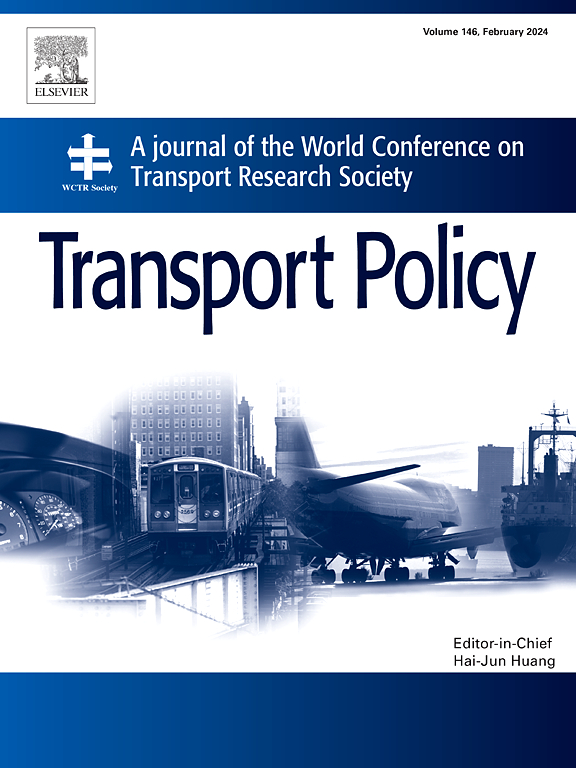Where can automated mobility-on-demand service thrive: A combined method of latent class choice and random forest
IF 6.3
2区 工程技术
Q1 ECONOMICS
引用次数: 0
Abstract
Transportation systems have reached a tipping point with autonomous driving technologies and innovative mobility services. There are a growing number of studies related to factors affecting the preference for automated mobility-on-demand mobility (AMoD) services. However, the various factors affecting the heterogeneity of autonomous driving services have not been thoroughly explored. Therefore, this study aimed to scrutinize the factors affecting the taste heterogeneity of autonomous driving services. A combined method of a latent class model and a random forest was suggested to overcome the overparameterization problem in a latent class model. The proposed model allows us to consider a wide range of variables affecting mode preferences at once, while it is challenging to interpret the direction and the magnitude of impact or heterogeneity compared to the latent class model. Therefore, the Shapley additive explanations (SHAP) was employed to interpret the results of the random forest. To investigate a variety of factors, two datasets, which are data including stated choice preferences, demographics, and attitudinal indicators from online questionnaire and regional characteristics from Statistics Korea, were combined based on the residential addresses of respondents. The latent class model revealed six classes based on transport mode preference. This suggests that there is taste heterogeneity in the preference for AMoD. SHAP analysis identified the magnitude and direction of the impact of the factors influencing taste heterogeneity for AMoD. The findings of this study can contribute to establishing transportation policies for autonomous vehicle diffusion and selection of pilot districts.
自动化的按需出行服务在哪里能够蓬勃发展:一种潜在阶级选择和随机森林的结合方法
随着自动驾驶技术和创新移动服务的出现,交通系统已经达到了一个临界点。越来越多的研究涉及影响人们对自动移动-按需移动(AMoD)服务偏好的因素。然而,影响自动驾驶服务异质性的各种因素尚未得到深入探讨。因此,本研究旨在探讨影响自动驾驶服务口味异质性的因素。为了克服潜在类模型的过度参数化问题,提出了一种潜在类模型与随机森林相结合的方法。所提出的模型允许我们同时考虑影响模式偏好的广泛变量,而与潜在类模型相比,解释影响或异质性的方向和大小具有挑战性。因此,我们采用Shapley加性解释(SHAP)来解释随机森林的结果。为了调查各种因素,我们根据受访者的居住地址将两个数据集结合起来,这两个数据集包括来自在线问卷的陈述选择偏好、人口统计和态度指标以及韩国统计局的地区特征。基于运输方式偏好的潜在分类模型揭示了6个类别。这表明对AMoD的偏好存在味觉异质性。SHAP分析确定了影响AMoD味觉异质性的因素的影响程度和方向。研究结果可为自动驾驶汽车扩散的交通政策制定和试点地区的选择提供参考。
本文章由计算机程序翻译,如有差异,请以英文原文为准。
求助全文
约1分钟内获得全文
求助全文
来源期刊

Transport Policy
Multiple-
CiteScore
12.10
自引率
10.30%
发文量
282
期刊介绍:
Transport Policy is an international journal aimed at bridging the gap between theory and practice in transport. Its subject areas reflect the concerns of policymakers in government, industry, voluntary organisations and the public at large, providing independent, original and rigorous analysis to understand how policy decisions have been taken, monitor their effects, and suggest how they may be improved. The journal treats the transport sector comprehensively, and in the context of other sectors including energy, housing, industry and planning. All modes are covered: land, sea and air; road and rail; public and private; motorised and non-motorised; passenger and freight.
 求助内容:
求助内容: 应助结果提醒方式:
应助结果提醒方式:


